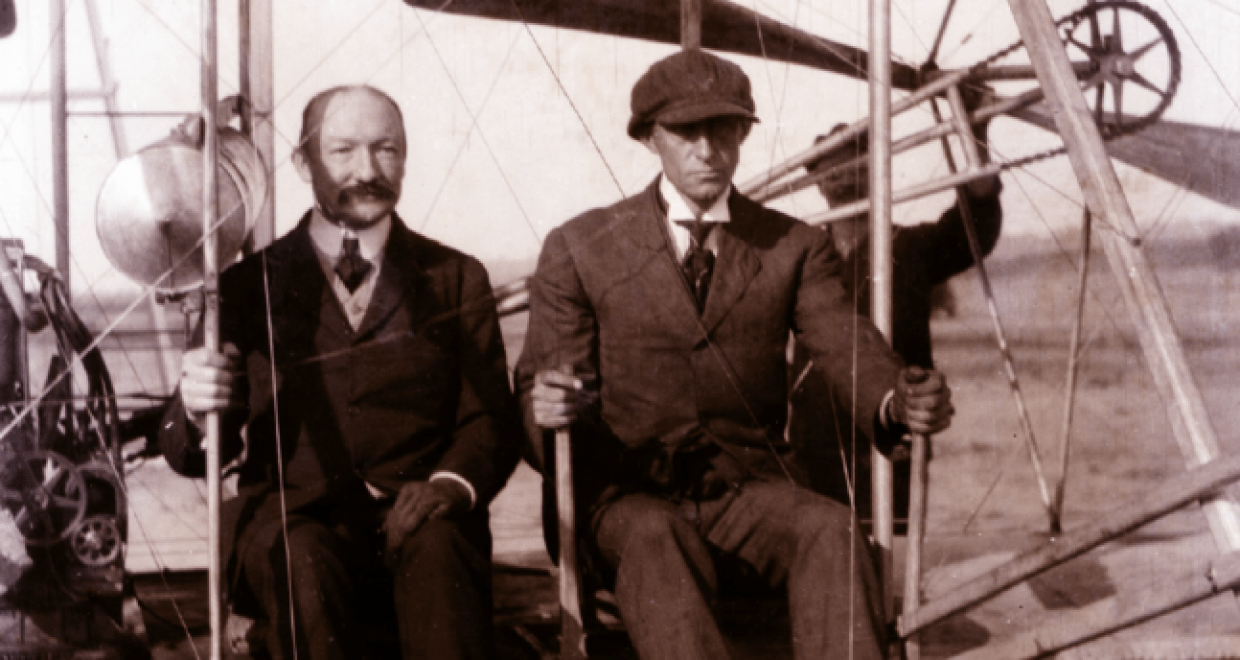The Aeronautical Journal – 125 years not out
The first edition of The Aeronautical Journal predates the first human powered flight by the Wright brothers by some five years. Even back then it knew that there was to be a rich future for man in flight to come.
125 years later, that potential has been realised with interest, from the initial hope of controlled sustained flight to flight powered entirely by electricity, flights carrying excess of a thousand passengers, supersonic flight, flights to the moon to building long term crewed structures to circle in the Earth’s orbit.
It was thirty one years after the formation of the Aeronautical Society (It was not to become ‘Royal’ until 1918) that The Aeronautical Journal was launched on a quarterly basis. It followed a series of Annual Reports that had until then documented the progress of early research into human assisted flight.

At a council meeting of the Aeronautical Society, the newly installed Honorary Secretary, Captain (eventually Major) B F S Baden Powell, a younger brother of the founder of the Boy Scout movement, announced that both a quarterly journal and a library would be created and operated by the Society. Funds of five guineas was made available to launch these. After it became clear that further funds were required, Baden-Powell himself subsidised the first three years of the Journal. Just three hundred copies of the first edition, published in January 1897, were printed and it sold for two shillings. In it was reported the death of Otto Lilienthal, the celebrated German glider pilot who served as primary inspiration to Percy Pilcher the British inventor and pioneering aviator.
Pilcher and Lawrence Hargrave, the British-born Australian engineer, explorer, astronomer, inventor and aeronautical pioneer were doing important work at the turn of the twentieth century on the theory of flight. Both found in the Journal, the perfect platform for reports of their research. Hargrave’s relationship with the Journal is particularly poignant as he was a passionate believer in scientific communication as a key to furthering progress and as a result never applied for a patent for any of his inventions.
In these early years, The Aeronautical Journal would report news of developments in the world of aviation from across the world and provide a digest of patents, publish photographs and drawings. It would also republish interesting articles from other newspapers and magazines.
Maybe the greatest claim to fame for the Journal is a genuine relationship with maybe the greatest aeronauts of them all, Orville and Wilbur Wright. Early on in the history of manned flight there was a argument as to who first flew first, Wright or Langley, with Griffith Brewer taking the Wright side with Glenn Curtiss supporting Langley. The Wright v Curtiss argument, played across the pages of the Journal led to the original Wright Flyer ending up in the Science Museum. The Wright Brothers famously wrote to the Smithsonian in 1899 to ask for all they had on the subject of flight. Among the suggestions were the articles on Hargrave and Pilcher that appeared in the Journal. The first UK report of the flights of the Wright brothers to be published as, ‘With the Power Flyer’, was written by Orville Wright and appeared in the April 1904 edition of the Journal. Wilbur Wright chose the Journal to publish his first ever technical paper, on the ‘angle of incidence’.
Another illustrious figure of the age, Robert Falcon Scott, better known as ‘Scott of the Antarctic’ also published a paper in The Aeronautical Journal July 1906 on ‘The Use of the Balloon in the Recent British Antarctic Expedition’.

January 1897, Vol I 
July 1901, Vol. V 
October 1996, Vol 100 
October 2004, Vol 108
In subsequent years, the Journal was to carry papers and articles from the great and the good, the key innovators and the creators from the history of international aviation. Work from F W Lanchester, J W Dunne, O Chanute, Ludwig Prandtl, Handley Page, S F Cody, A V Roe, Gustave Eiffel, Moore-Brabazon, Igor Sikorsky and Santos-Dumont, all appeared in the Journal. Many commonplace terms, and not just aeronautical phrases, appeared for the first time ever in print in the Journal such ‘take-off’, ‘state-of-the-art’, de-ice, ‘jammer’, ‘thermal’ and ‘turbocharger’.
In January 1918 the Journal began to be published monthly at 2s 6d a copy instead of quarterly. The Guggenheim Fund gave the Society £1,000 in 1925 which was spent on both the Journal and library. With these funds, the Journal was enlarged.
The Journal spawned a spin-off publication specialising in historical research papers in 2011 entitled, The Journal of Aeronautical History. This has only ever appeared as an online publication. Research papers published in The Aeronautical Journal have always been eligible for The Society’s Written Paper Prizes presented each year in November at The RAeS HQ in Mayfair. Here those writing the papers considered worth of acclaim and award by The Society’s Medals and Awards committee are honoured.
By the time Cambridge University Press became publishing partners, the Journal was a near unique publication with all segments of the production process carried out from a corner of the RAeS Publicatons office. Here the papers were received, allocated Associate Editors/referees, reviews and judgements were assessed, approved papers were typeset, corrections added, and then sent to printers and then on to the fulfilment house. In 2007 the Journal reduced in size from a near A4 format to A5.
The RAeS joined in partnership with Cambridge University Press in 2015, beginning with a special issue commemorating the 150th anniversary of The Royal Aeronautical Society. Cambridge University Press kindly digitised the entire journal back catalogue which is now available for purchase from CUP and is available and accessible by members, visitors to the National Aerospace Library and No.4 Hamilton Place. The Journal has had its brushes with fame, no more so than when it was featured in an episode of The Crown read by a young Prince Phillip.
The modern day journal currently enjoys a global readership and boasts a world-class team of distinguished experts acting as Associate Editors reviewing its papers. The Journal now includes more papers, and addresses a broader range of topics than ever before with a comprehensive online presence, in partnership with Cambridge University Press, giving subscribers full and flexible access to all issues published since 2003, and much of the back catalogue dating back to 1897. From this month, The Journal is now available only as an electronic online publication.
The Aeronautical Journal continues to focus upon editorial excellence and publishing innovative, and important and influential papers using the highest standards of peer-to-peer review. The Journal remains to this day, the oldest aviation publication in publication. To coin a phrase we introduced to the world, The Journal will always continue to report on the most state-of-the-art aerospace research.







Is there a hard copy publication of the Special Issue No.1295 available? If so, as a corporate member of the R.Ae.S. for over 50 years, I would very much like to obtain a copy.
Please advise. Thank you.
David J Haines C.Eng., M.R.Ae.S.
Hi David, The Aeronautical Journal has moved to online only from 2022 so there are no hard copies of Issue No. 1295 available for purchase.
If you are interested in learning more about the move to online only journal content please click here
125 not out; a great feat.